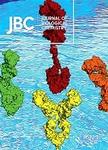版权所有:内蒙古大学图书馆 技术提供:维普资讯• 智图
内蒙古自治区呼和浩特市赛罕区大学西街235号 邮编: 010021

作者机构:Yunnan Univ State Key Lab Conservat & Utilizat Bioresources Kunming Yunnan Peoples R China Kunming Med Univ Ctr Lab Hosp 2 Kunming Yunnan Peoples R China Kunming Med Univ Dept Neurosurg Hosp 2 Kunming Yunnan Peoples R China Kunming Med Univ Sch Publ Hlth Kunming Yunnan Peoples R China Yunnan Univ Tradit Chinese Med Fac Basic Med Kunming Yunnan Peoples R China
出 版 物:《JOURNAL OF BIOLOGICAL CHEMISTRY》 (生物化学杂志)
年 卷 期:2020年第295卷第50期
页 面:17323-17336页
核心收录:
学科分类:0710[理学-生物学] 071010[理学-生物化学与分子生物学] 07[理学]
基 金:National Natural Science Foundation Program of China [32060632, 31460024] Department of Science and Technology of Yunnan Province [2019FA046] Kunming Medical University [CXTD201703]
主 题:innate immunity aversive behavior immunological memory of invertebrate bacterial reinfection C elegans chemosensory neuron neurotransmitter molecular signaling pathway
摘 要:Recent studies have suggested that innate immune responses exhibit characteristics associated with memory linked to modulations in both vertebrates and invertebrates. However, the diverse evolutionary paths taken, particularly within the invertebrate taxa, should lead to similarly diverse innate immunity memory processes. Our understanding of innate immune memory in invertebrates primarily comes from studies of the fruit fly Drosophila melanogaster, the generality of which is unclear. Caenorhabditis elegans typically inhabits soil harboring a variety of fatal microbial pathogens;for this invertebrate, the innate immune system and aversive behavior are the major defensive strategies against microbial infection. However, their characteristics of immunological memory remains infantile. Here we discovered an immunological memory that promoted avoidance and suppressed innate immunity during reinfection with bacteria, which we revealed to be specific to the previously exposed pathogens. During this trade-off switch of avoidance and innate immunity, the chemosensory neurons AWB and ADF modulated production of serotonin and dopamine, which in turn decreased expression of the innate immunity-associated genes and led to enhanced avoidance via the downstream insulin-like pathway. Therefore, our current study profiles the immune memories during C. elegans reinfected by pathogenic bacteria and further reveals that the chemosensory neurons, the neurotransmitter(s), and their associated molecular signaling pathways are responsible for a trade-off switch between the two immunological memories.